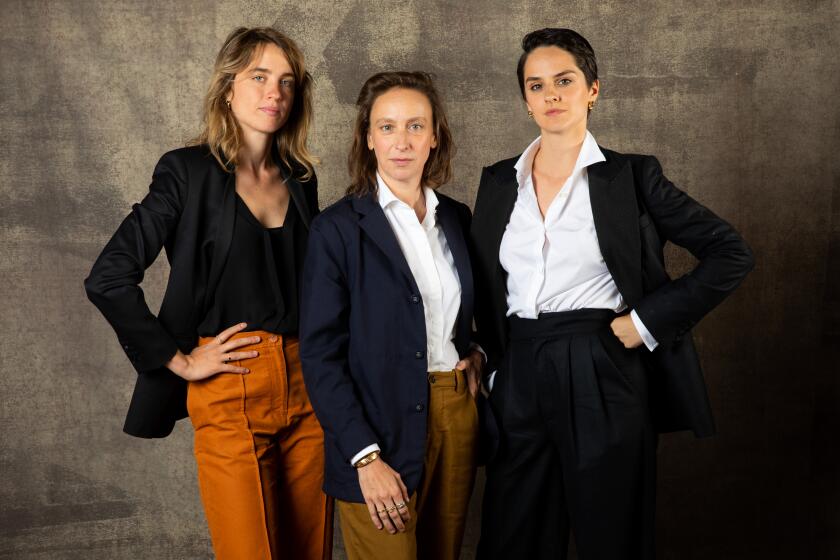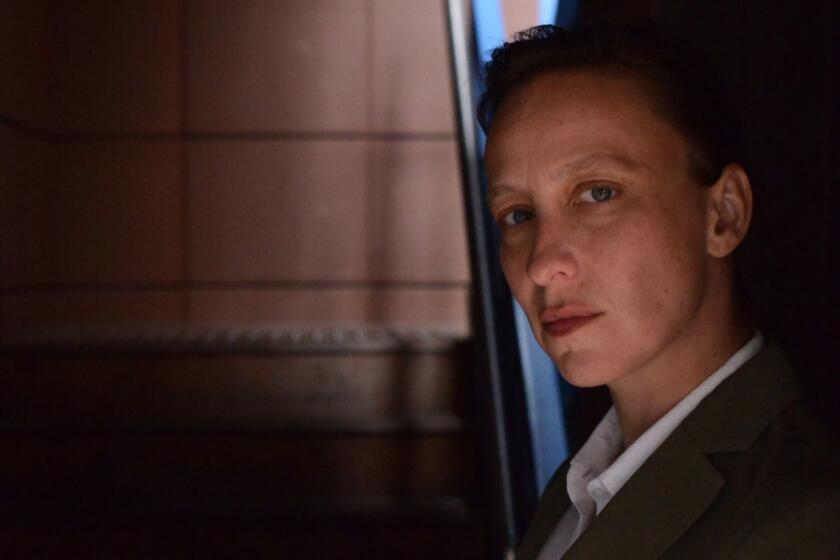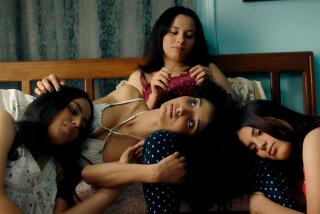How Céline Sciamma made the film every parent and child should see together
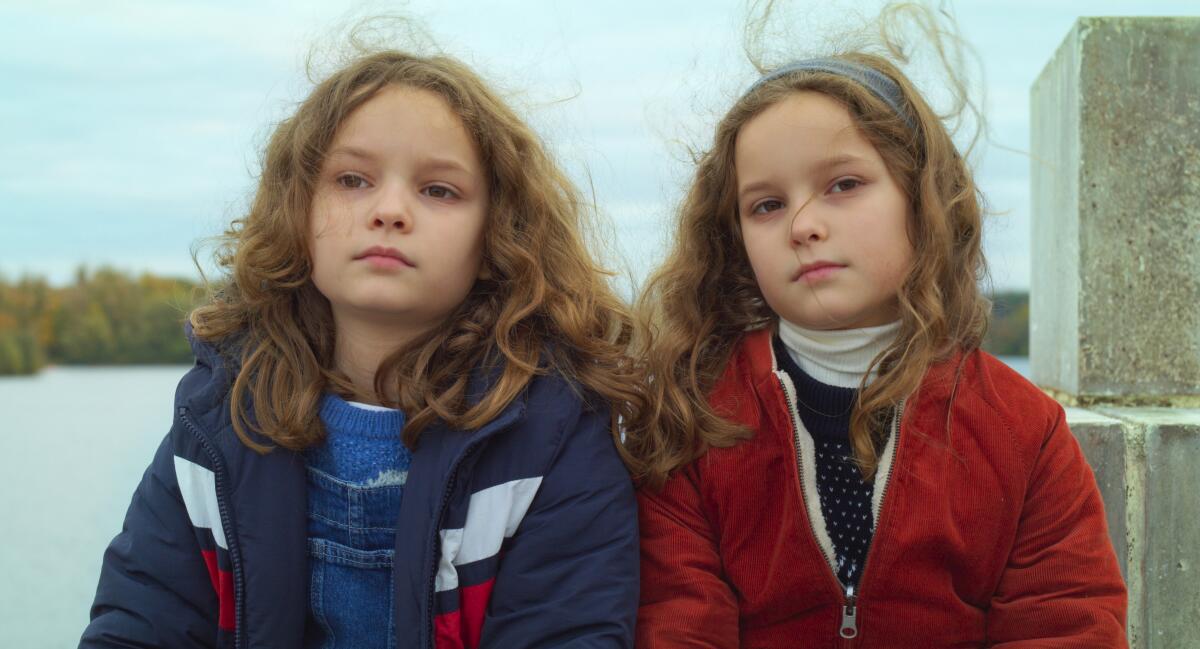
From the lauded French auteur behind the unabashedly feminist modern classic “Portrait of a Lady on Fire,” Céline Sciamma’s “Petite Maman” is a 72-minute time-travel fable that revels in the casually profound friendship between young Nelly (Joséphine Sanz) and her mother, Marion. In a magical turn of events, Nelly meets Marion not in her adult iteration, but as a girl (Gabrielle Sanz) her same age. Future parent and daughter learn about each other’s joys and preoccupations as perhaps they never could have in our linear reality.
The concept was born of a single image that came into Sciamma’s mind in 2017, that of two girls in front of a treehouse, and the question of what would happen if she met her own mother as a kid. Would they be sisters? Would they share the same mother?
Céline Sciamma’s follow-up to ‘Portrait of a Lady on Fire’ is an enchanted mother-daughter drama that draws inspiration from Hayao Miyazaki.
“Our common history with our parents is childhood. That’s what we share,” she said from Paris during a recent video call. “We know about our parents’ childhood because we’re brought up in their rituals. But we don’t know about their bodies, their feelings, their fears. That’s what the characters in the film think about.”
When Sciamma was around 8 years old, the same age as the prodigious protagonists of her succinctly delightful new masterwork, she loved playing pretend. She traces her adult vocation for cinema to those early displays of a vivid imagination.
“My favorite thing to do at the time is actually in the film, which was playing this little detective character that the girls also act out in the story,” she said. “That was the game I loved playing the most because it was like doing exactly what I do now. It involved some form of script writing.”
Sciamma considers that investigator persona as her first foray into narrative construction. Not only was she primitively engaging with staging and character development, but she forged her directing instincts by recruiting neighbors and her two younger siblings to perform in her “films.” Her plots had no definitive conclusion but plenty of spontaneous creativity.
“I guess crafting stories and trying to make them real was already my favorite thing then,” she said. “I was always that little character, and that’s why it was so funny for me to actually do a part of that ‘film’ as a grownup.”
Interrogating the origin of this interest for solving mysteries, Sciamma points to a combination of the ’70s cop shows she watched growing up, such as “Starsky & Hutch” or “Columbo,” and her preferred author, Agatha Christie.
“As a female reader, whether you’re a girl or you feel like a girl, her crime novels were violent and full of everything you want from a story,” she said. “But they were written by this kind of grandmother that you could trust to tell the truth around crime.”
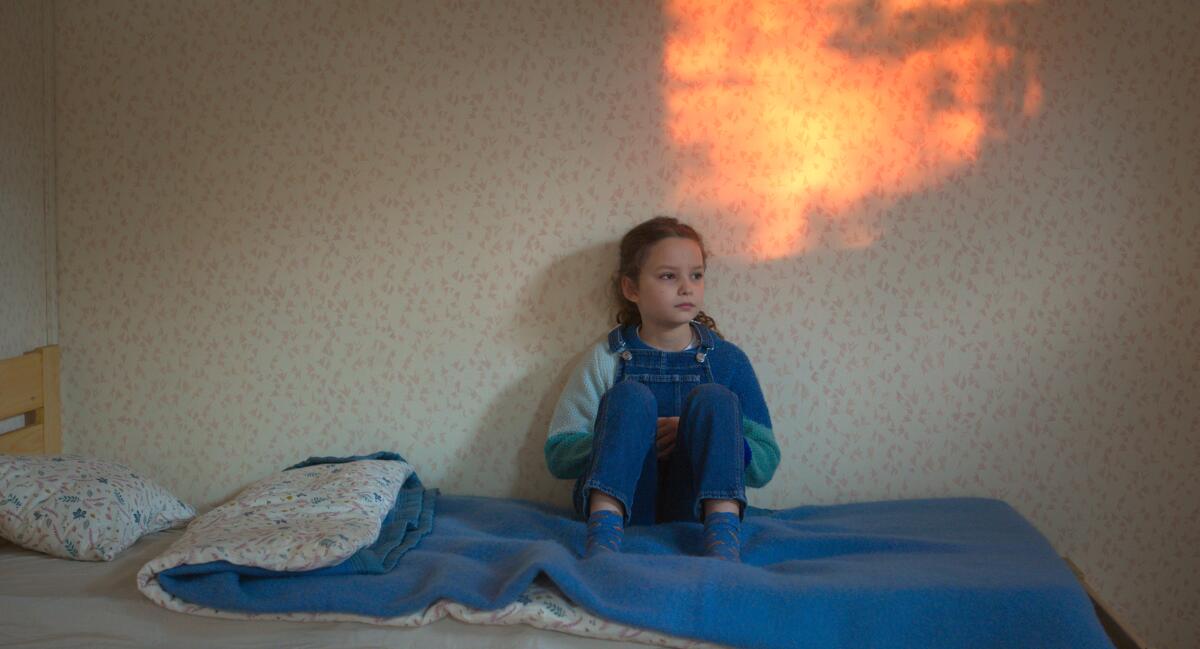
Noémie Merlant and Adèle Haenel play an 18th century painter and her subject who fall in love in Céline Sciamma’s exquisite new movie.
But while she savored the distanced peril of the fiction she was consuming, Sciamma recalls having concrete fears that responded to a conscious acceptance of her impermanence.
“I was really afraid to die and of death in general. Kids realize that they’re not eternal. I remember being hit by the idea of death as something that I couldn’t avoid,” she said. “I was also scared of the night because that’s when kids are by themselves and when they can actually think about what goes through their head and their feelings. Weirdly, the night was a time of freedom, and freedom is also scary.”
From the onset, mortality is present in “Petite Maman.” Nelly’s timeless adventure begins after her grandmother dies and the family heads to her now-vacant home in the countryside to clear it out.
For Sciamma, who lost her own grandmother soon after the film premiered at the 2021 Berlin International Film Festival, children living through the ongoing pandemic are hyperaware of death. As she wrote “Petite Maman” in record time during the early days of the COVID-19 global crisis, the filmmaker envisioned kids as her target audience.
“We don’t take kids seriously enough. We all remember the anxiety when we were kids; it was huge and I’m trying not to pretend that it wasn’t there when I think about kids today. I don’t have kids, so maybe that’s why I can do that,” she said. “I’m not saying childhood is sacred. But we are individuals who are aging. It’s the same body with more and more experiences and we should be considered full citizens starting at age zero.”
While her desire was to create a work of art young viewers could appreciate (hence the intentional brevity of its running time), Sciamma knows her project exists in the art-house realm. Since it’s not a mainstream title explicitly advertised for children, its success depends on adults to take kids to see it. The artist interpreted this as a chance to experiment.
“It’s not about me trying to lure kids to come, so I can be radically honest because I’m only thinking about cinema,” she said. “I’m thinking about, ‘How do I talk to them as an audience?’ It’s a high-pressure job to write for kids because they’re the most contemporary viewers you can get. They have no cinema background, so they’re receptive to fresh ideas.”
A major realization came for Sciamma after adapting the novel “Autobiographie d’une Courgette” by Gilles Paris into the screenplay for Claude Barras’ Oscar-nominated, stop-motion animation feature “My Life as a Zucchini,” about a group of orphan children.
“Writing this film changed my perspective on writing,” she said. “It gave me this experience of trying to create a safe space for kids watching something incredibly cruel.”
Sciamma refers to the story’s opening scene in which the titular Zucchini, a 9-year-old boy, accidentally kills his mother. In the book, the incident involves a gun, but in her screen version, the tragedy takes place on a flight of stairs. She deliberately toned down the directness of the violence to keep focus on the subsequent emotional honesty of the piece.
“Now I’m always thinking like I’m writing for kids, in a way; even the writing of ‘Portrait of a Lady on Fire’ was really impacted politically by trying conflictless stories, for instance,” she added. “It was something I experimented with that was very influenced by ‘Zucchini.’”
Written and directed by Céline Sciamma, “Portrait of a Lady on Fire” brings a fresh perspective to the historical romantic drama, with celebrated performances by Adele Haenel and Noémie Merlant.
For a long time, Sciamma believed that writing was about finding conflict and devising narratives grounded on traditional causality. Such a format demands detailed explanations for every element in the tale, something that doesn’t much interest her, especially for this idea.
“If I was going by the book to make a time-travel film, ‘Petite Maman’ would have to be set in a very particular time and there would have to be a time paradox or a reasoning for how they could get back, which you would have to hide and then reveal,” she said. “This would take a lot of room.” Sciamma attributes our collective perception of how these stories should function to landmark titles like the “Back to the Future” trilogy.
“I have a lot of respect for that, but I just wanted Nelly and Marion to believe each other and make the most of this time. That’s always the case with my characters,” said the director. “They have a week or so to experience something outside of their world or inside the world they want to belong to. My films are just characters experimenting together.”
But make no mistake, Sciamma never thought of “Petite Maman” as a minor effort. On the contrary, for her, concise films can leave an indelible mark and exhibit the concentrated power of cinema.
“I don’t see ‘Petite Maman’ as a modest film. The impact I want it to have is to give us a new mythology to understand ourselves and heal,” she said. “Rather than just looking back and realize our parents were also kids, it’s a form of future perception of them. It’s about connecting, but about being reunited. That’s why it’s my dream for the film to be watched in a theater filled with adults and kids, because the film respects them both equally.”
Sciamma feels a sense of kinship between “Petite Maman” and the body of work of Japanese animation legend Hayao Miyazaki, as well as with other anime directors, because they share thematic sophistication often aimed at children as well as impeccable visual artistry.
Miyazaki’s “My Neighbor Totoro,” she believes, is the most closely linked to “Petite Maman,” as it unfolds in a forest where two sisters witness unexplained magic. Sciamma also notes “Wolf Children” by Mamoru Hosoda, also about a pair of siblings, who are half-wolves.
Sciamma’s fascination with the forest, which she considers the most democratic of natural environments — because most people have access to one or have set foot in a wooded area — emerges from how prevalent they are as settings for fairy tales, but also from her own upbringing in the town of Cergy-Pontoise, a suburb of Paris. The exterior sequences in “Petite Maman” were shot in her hometown, where she had filmed her debut, “Water Lilies.”
“Back then it was a new city that was built like a utopia where you would never encounter cars, so a kid could run wild without fearing much. There was a lot of freedom. I remember being also with a lot of kids. We had our little social lives by ourselves in these woods,” Sciamma said. “We had the possibility of being lonely, which is basically the beginning of every adventure, I think.”
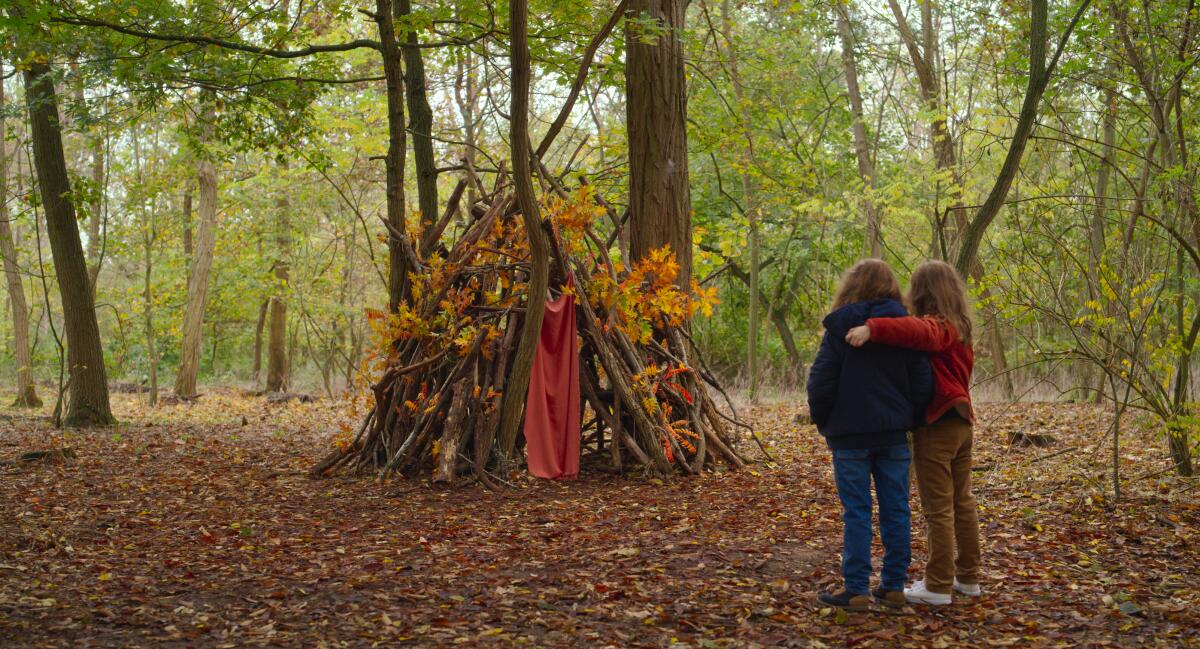
These moments are most often depicted in animated films, which have the potential to convey philosophically complex and socially relevant truths, even in family-friendly fare. Sciamma points to Domee Shi’s recently released “Turning Red,” centered on a 13-year-old girl whose strong emotions transform her into a red panda. As she asserts her autonomy, her relationship with her mother ruptures. For Sciamma, Pixar’s latest resonates with “Petite Maman” as part of a matriarchal mythology finally coming to fruition in cinema as more women are able to tell their own stories.
“A film about the libido of kids is so politically bold. And it’s so tender in the release it gives to kids about friendship, about their hearts. It’s an important film. If I had seen it at 10 years old, it would have been my favorite film. I would have been obsessed with it,” Sciamma said. “I’ve already seen it three times. I keep telling people to watch it, especially if you have a kid in your life.”
Similarly, the director adored Michael Rianda’s “The Mitchells vs. the Machines,” in which a cartoon depiction of Sciamma appears among the pantheon of heroes for burgeoning queer filmmaker Katie Mitchell. “When I watched the film, I was so connected to the character. I felt like her. This is the story I would’ve loved to see at 12,” Sciamma said. “My God, it would’ve been so freeing and inspiring. I felt really inspired. I thought about my teenage self.”
Initially, Sciamma was certain “Petite Maman” should be an animated feature. The locations and otherworldly aspects, she believed, would lend themselves to be hand-drawn. Also, she thought, an animated version could prove more democratic for children if dubbed to avoid subtitles. But later, she sensed it would turn out uniquely wondrous in tangible form.
“When I decided that it should be live action, I thought, ‘It’s a film about presence. It’s a film about the body of the people we love; it’s going to be about their breath, about their warm skin being back from the dead. It’s a ghost story with real bodies.’ Then I felt it should be live action, but it benefited from that tradition of cinema, from animation.”
But even though she opted for live action, the film’s realization entailed a high level of moviemaking intervention. All the interior sequences in “Petite Maman” were crafted inside a studio for the purpose of having greater creative control over the spaces. Sciamma wanted the home Nelly and Marion share to be a replica of the homes of her two grandmothers combined. Outdoors, there were also manicured touches, such as bringing in and staging fall leaves for the desired effect.
“When someone’s like, ‘Oh, the images are beautiful,’ it’s because all those layers of decisions that grooved together in a way that you can feel that it’s all premeditated so that you never forget that you’re in the cinema,” she said.
Acting as her own costume designer on this and all her films (except for “Portrait”), Sciamma not only chose the garments her young actresses would wear, but on occasion she included some of her own clothing from when she was their age. For example, the vest Nelly wears when playing the little investigator belonged to the director.
Likewise, the notebooks and drawings on screen belonged to Sciamma as a child. These keepsakes of her younger self, which her parents preserved and eventually handed over to her, have now been immortalized. “There’s a smoking fox in the end credits, and that’s a drawing I made when I was 5 or 6, so my own schoolbooks became props for the film,” she said. “Now they have two covers, one with my name and another cover with the name of the character. They are at once memorabilia and props.”
Unlike other productions casting child performers out of hundreds of auditions, Sciamma saw only the Sanz twins after her casting directing screened a handful of other candidates. Their most notable qualification, at first, was their enthusiasm to join the filmmaking ride. Since “Water Lilies,” and later in “Tomboy” and “Girlhood,” Sciamma has honed her craft directing children and adolescents to striking performances.
Rehearsals aren’t part of her toolkit because the collection of sensations and rhythms when the camera is rolling is irreplicable; instead, she refrains from pandering and cultivates children’s capacity for play, something she thinks society forces us to abandon.
“When you can really connect with kids without any dynamic of power, it’s the best conversation you can have, in a way. Intergenerational conversations always feel the best to me, whether it’s talking to a very old woman or to a very young kid,” she said. “This is not happening much today, but it helps to have perspective. I’ve had the luck to have my two grandmothers until very recently, and I really believe this helped me a lot in my life.”
Céline Sciamma has been on the red carpet at Cannes before.
The notion of intergenerational trauma and intergenerational love were paramount in Sciamma’s process for “Petite Maman.” For her, the entanglement across time and space includes Nelly’s grandmother, Marion’s mother, who has passed. Through their whimsical days together, Sciamma invokes the possibility of having a dialogue with those no longer physically present in order to console oneself.
“I wanted ‘Petite Maman’ to be this pocket film that wouldn’t stay in the room but that you would take with you to play with your own story and soothe you. It was also made during the pandemic, so it felt like it was dealing with what we were all dealing with,” she said. “A lot of people have been telling me that now when they don’t feel good or when they’re in a conflict with their parents or when someone’s far away, they picture themselves as kids with their parents as kids.”
With “Petite Maman” out, charming audiences the world over, Sciamma has now pondered the breakthrough that her lesbian period romance “Portrait of a Lady on Fire” represented for her and her career. Her takeaway: relief.
“I feel grateful that I had this experience of reaching so many people. It gave me some confidence and some trust in the fact that cinema can have an impact,” she said. “But now I’m also very much aware that I’m not interested in trying to repeat that. That’s very freeing because I feel like I can play other games.”
More to Read
Only good movies
Get the Indie Focus newsletter, Mark Olsen's weekly guide to the world of cinema.
You may occasionally receive promotional content from the Los Angeles Times.

